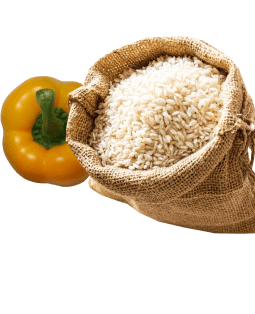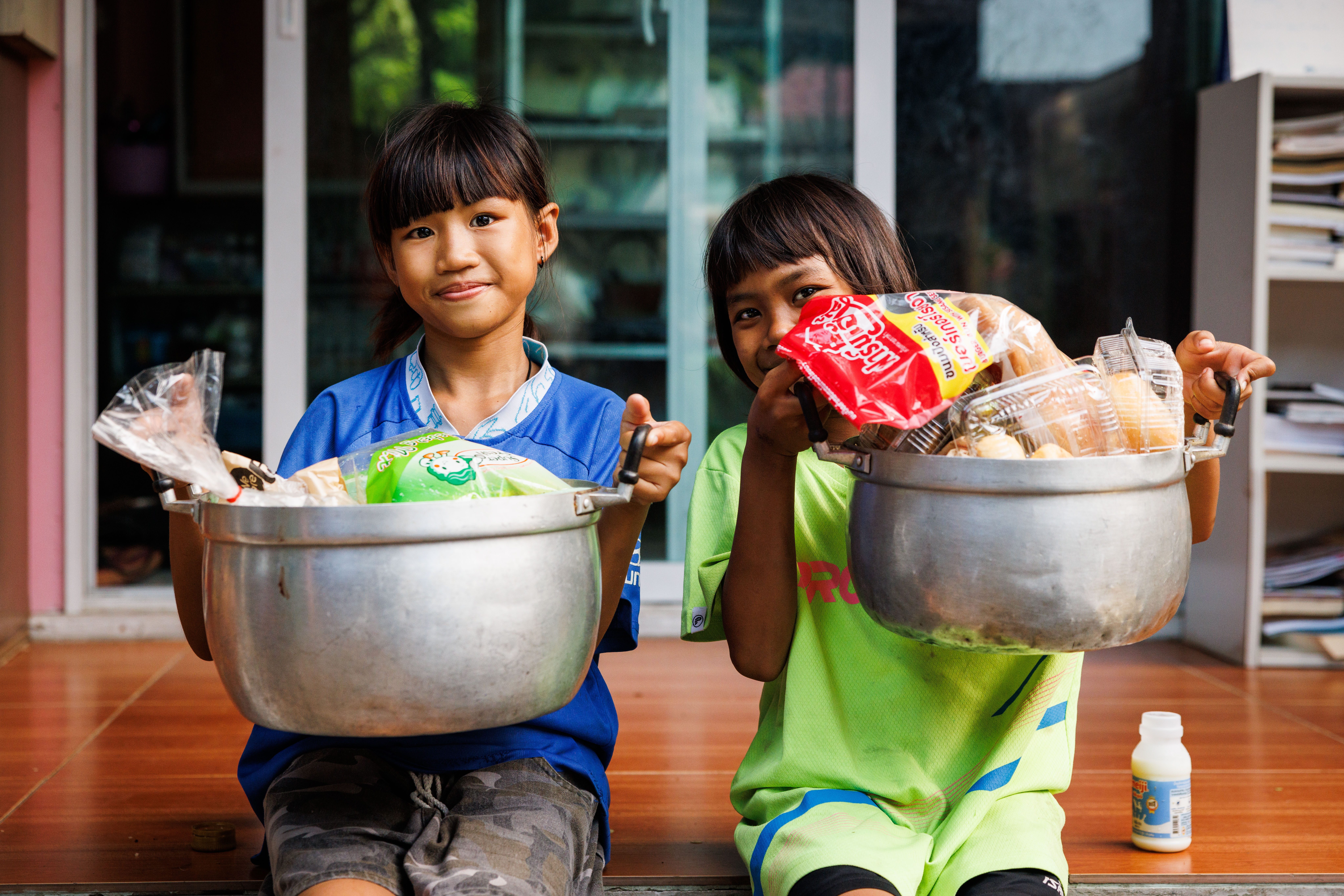On a hot and humid day in Thailand, Kristrin Siripaphawee starts the engine of a bright green refrigerated truck, ready to navigate the busy streets of Bangkok. He’ll spend the next five to six hours making at least 15 stops at grocery stores, coffee shops and bakeries. Kristrin is tall with a soft-spoken demeanor, but he navigates central Bangkok’s narrow roads with confidence, weaving between motorbikes and taxis. He has traveled a similar route every Tuesday for the last six months. As he pulls up to each of his many stops, he is greeted by familiar faces from parking and security attendants to employees readying boxes for his arrival.
This is a typical day for Kristrin, a full-time Food Rescue Ambassador at Scholars of Sustenance Thailand (SOS). His role is to pick up donated, surplus food from local retailers then deliver that food to communities across Bangkok.
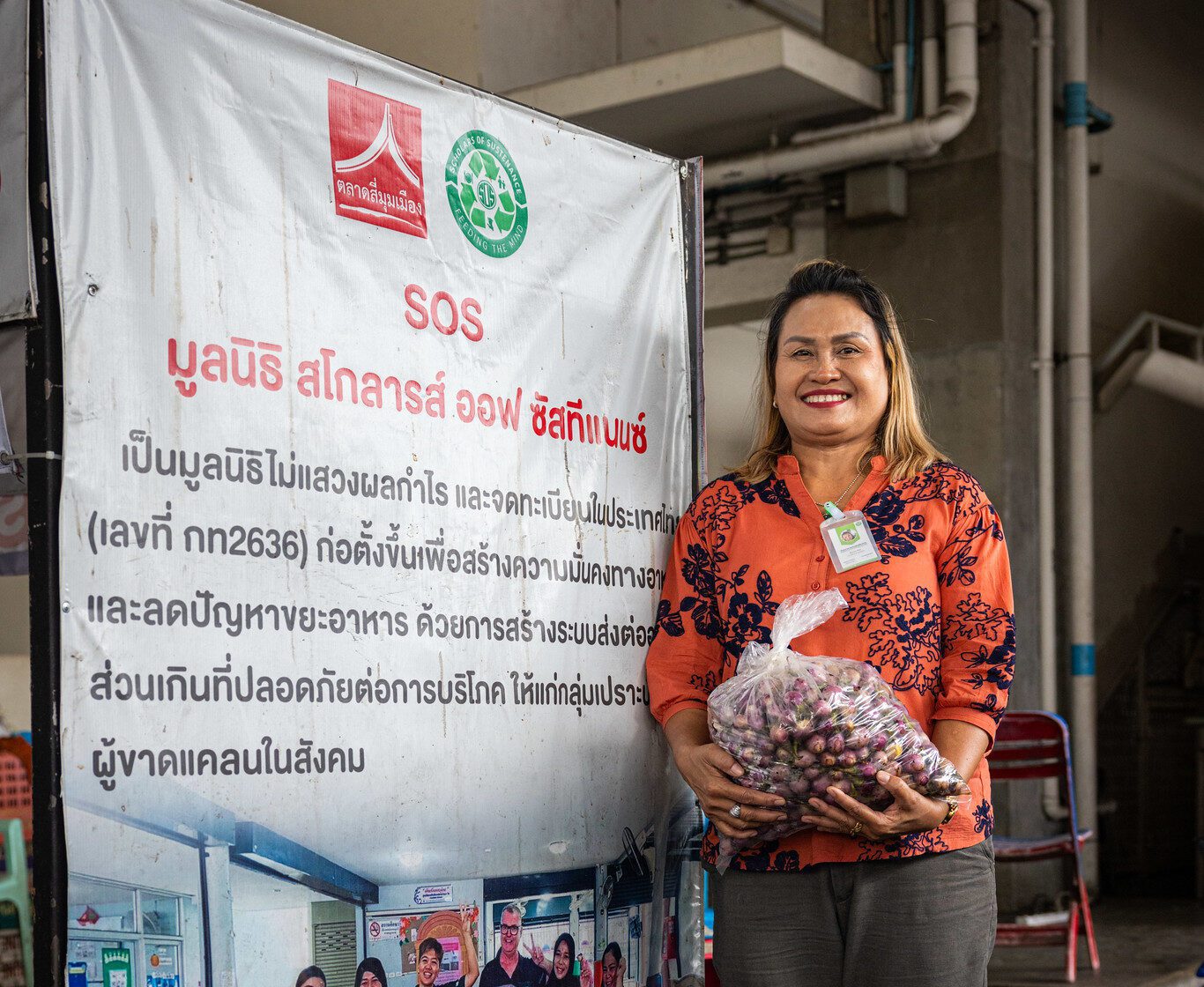
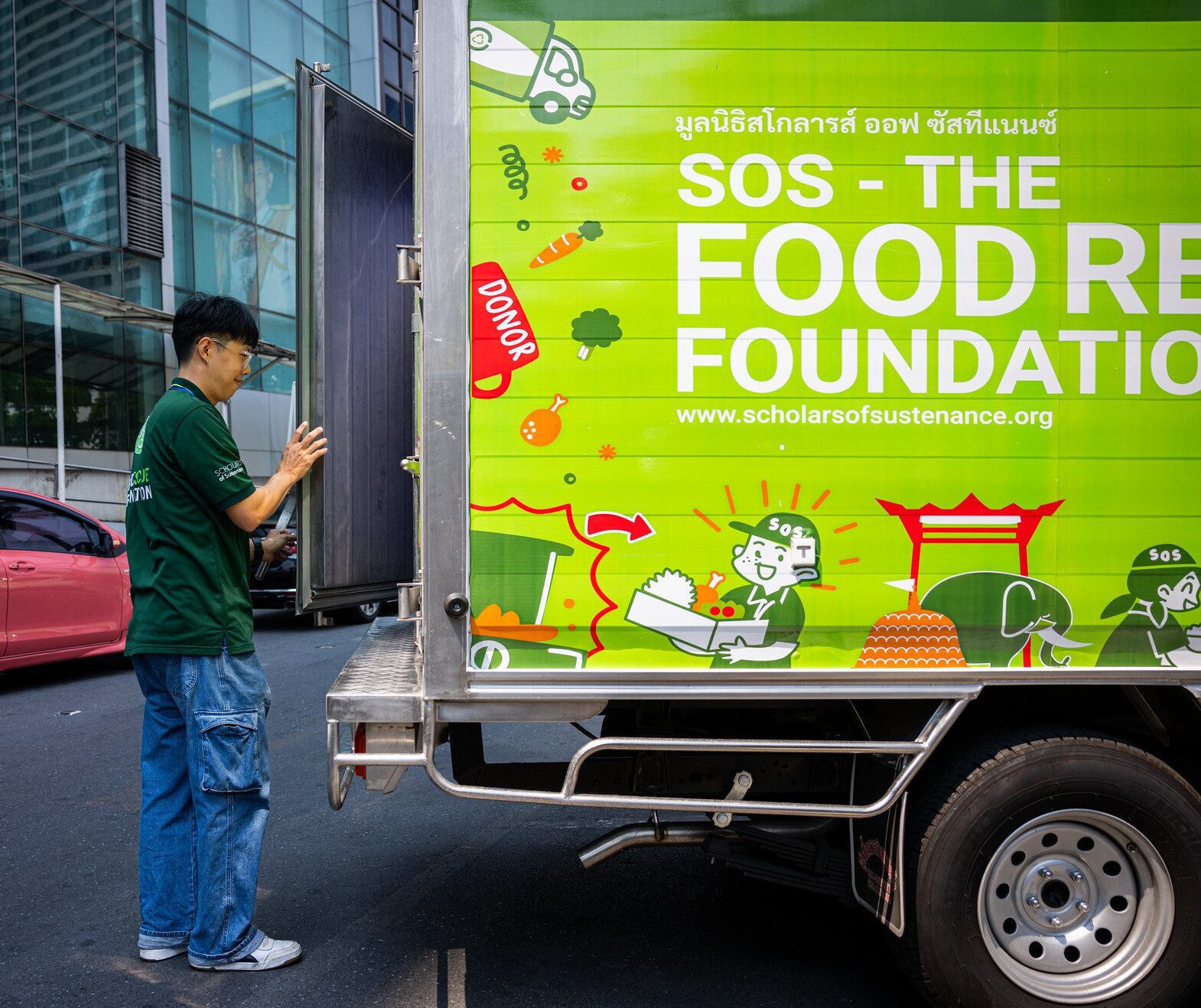
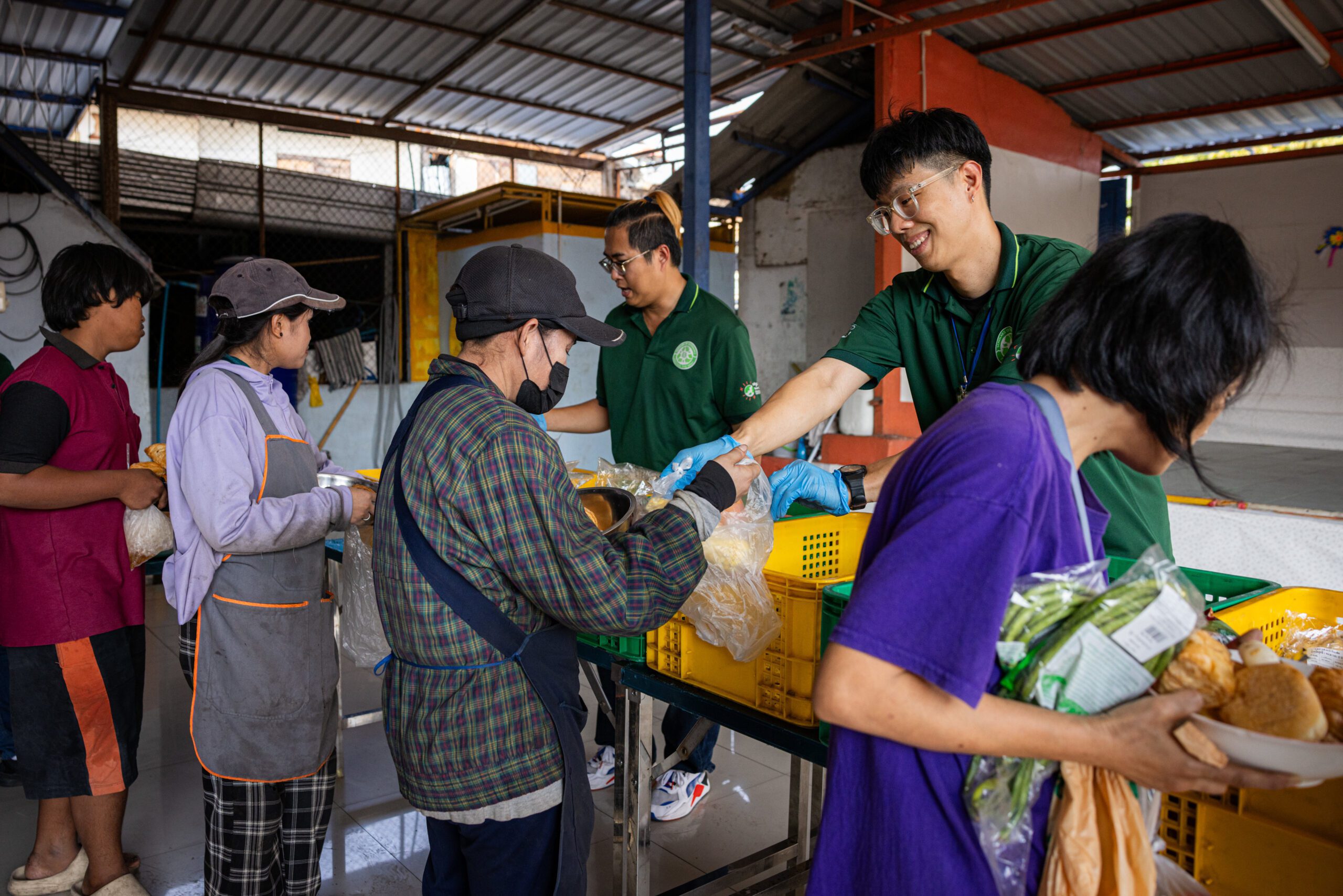
Forty minutes north, Kamonlak Bootsan pulls up to the Simummuang Market. Kamonlak is in her mid-50s, with her hair pinned back to keep her cool from the sweltering heat. Her green SOS volunteer badge announces her presence to the bustling market. The Simummuang Market is massive — easily filling the space of several football fields, overflowing with stalls, trucks and vendors selling and trading goods from all over the region — but Kamonlak navigates the area with ease. She is here to collect fresh produce donated by farmers, which will then be distributed and used to provide hot meals in her community, just a few miles away in Bang Phun.
For Kristrin, this food recovery and distribution effort is a full-time job. For Kamonlak, it is an act of service.
Kamonlak began her journey as an SOS volunteer in 2020. As of April 2024, she is one of 262 leads in SOS’ Local Volunteer Network, a program that allows community members to lead on food security solutions that will work best for their community’s unique needs.
This program fits naturally with the culture and mindset found throughout Thailand.
“In Thai culture, we believe in always looking out for each other and that people who have less should still have access to what they need,” said Tanaporn Oi-isaranuku, SOS director of operations and communications. While more than 90% of Thailand’s population practices Buddhism, its custom of making “merit,” or doing good deeds, is common among nearly everyone in the country.
“We’re operated by Thai people, and we are really community-based,” said Tanaporn, who has worked at the organization for nine years. “We really engage with community volunteers. We really hear them, what they want and what they need and how we could match their need.”
Many of the people behind SOS’ operations are its young staff members, most in their mid-to-late 20s, who were “looking for [a job] that is not traditional . . .” said Tanaporn, “something that fulfills the soul. Our staff will tell you what they like most about working here is when they can actually physically do something for others.”
This mindset has fueled SOS’ work for years – its staff and volunteers have served more than 5 million people in 4,000 communities since it was founded in 2016.
“I help bring in the good things from outside to our community households … It’s purely volunteer work, purely volunteer spirit,” said Kamonlak, whose volunteer work started in 2004 when she helped launch housing cooperatives for people who needed reliable and affordable housing. Since then, volunteering has become part of her daily life. She is also a village health volunteer and coordinates special projects with the local municipality office.
“People in the community are like brothers and sisters because we came from poverty,” Kamonlak continued. “Whenever we have something, we share it with one another.”

Originally started in Bangkok, there are now four SOS offices across Thailand recovering and distributing food seven days a week. With nearly 10 years of learning and building community relationships, launching the Local Volunteer Network was a natural step for SOS to reach more people and tap into Thailand’s volunteer culture.
Through the Local Volunteer Network, SOS staff train trusted volunteers, like Kamonlak, to pick up donations from nearby food donors, like grocery stores and markets, and distribute it to their communities. This model allows more people to access food more often without SOS needing to hire additional staff, purchase and maintain more trucks or add to the organization’s carbon footprint.
Since launching the Local Volunteer Network in , SOS has expanded the program to five provinces and plans to add eight more provinces by the end of 2025.
For SOS, this model is about more than organizational and environmental sustainability — it’s about ensuring the longevity of food recovery overall. Volunteers are equipped with thorough food safety and handling training; they use their own vehicles to pick up donations and they gradually build relationships with businesses that donate food. “If ever SOS no longer operated, the concept of rescuing food will be there, and people can do it and can learn from it,” said Tanaporn. “We can expand beyond one organization or identity.”
The culture of looking out for one another doesn’t stop at SOS staff and volunteers, but extends to its network of business partners ranging from food retailers to hotels to the Simummuang Market, the largest agricultural distribution center in Thailand.
Simummuang Market, located 40 minutes north of central Bangkok, is home to more than 2,500 vendors and welcomes 30,000 customers every day. In April 2024, SOS and the market started a partnership, providing an easy way for farmers and vendors to donate surplus produce that may not have sold due to minor cosmetic imperfections or simply having more product than needed by the market’s buyers. Throughout the day, vendors drop surplus produce on designated pallets for Kamonlak and two fellow volunteers to pick up and bring back to their neighborhood.

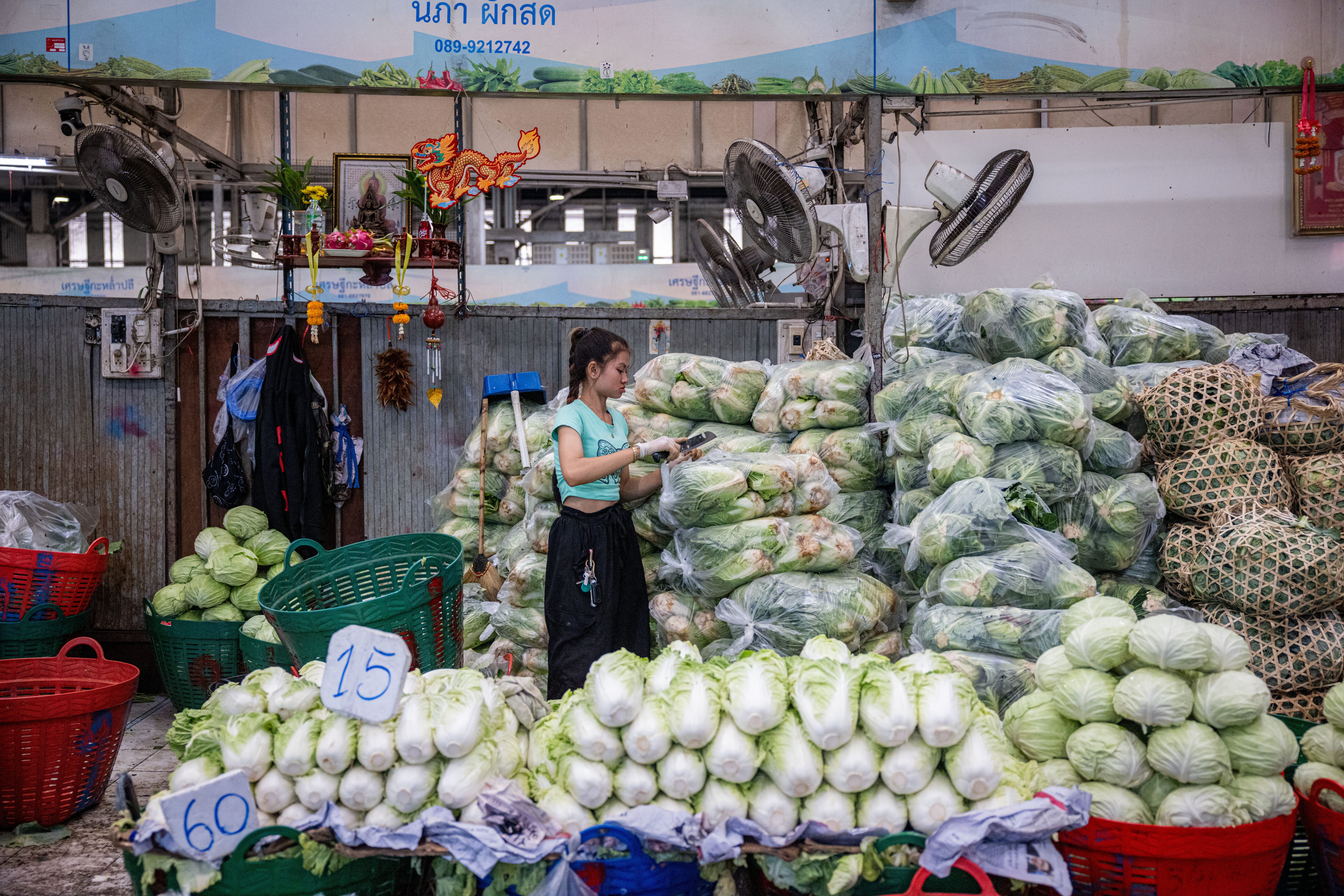

“Right now, we usually have around 230 tons of [food] waste per day,” said Irin Phatraprasit, the market’s organizational development director, recognizing that much of that food is not waste at all. “So, we thought, let’s try to reduce the amount of produce that goes to the landfill as much as possible.”
The market already had a program to turn surplus food into animal feed. Now, market staff leverage their close relationships with farmers and vendors to spread the word about the SOS donation program as another option for surplus produce. The program is currently being piloted in the market’s vegetable truck area, where farmers sell directly from the back of their trucks, but Irin says they hope to expand to other parts of the market where vendors have permanent stalls so more communities like Kamonlak’s can receive food.
Tanaporn says the inspiration for this partnership came from learning about a similar program between fellow GFN member Foodbank Australia and the Sydney Produce Market. In September 2024, more than 40 food bankers toured the Sydney Produce Market during GFN’s Global Summit. Knowledge exchange opportunities like this are a core offering to GFN members in more than 50 countries.
“Being a part of GFN and its Accelerator program has really provided knowledge sharing across the region,” said Tanaporn. “In the Accelerator program, many years ago until now, we have been able to grow partnerships within the country and outside of the country.”
Since 2019, the Accelerator has provided SOS and more than 20 other food banks with tailored training, grants and learning opportunities to advance their food assistance work in areas with high need.
Back in Ban Phun’s open-air community kitchen, Kamonlak and eight volunteers are washing and chopping vegetables, grinding chili peppers and cooking sour soup over a hot stove. The soup will be ready to distribute to neighbors by the time kids get home from school. One volunteer, Janatha Kanya, has even come from a neighborhood three kilometers away to donate her time, despite holding multiple volunteer jobs in her own community.
The raw produce not used to prepare hot meals will be distributed to neighbors to use at home. The group typically cooks a hot meal once a week but will cook more frequently if they have enough donated ingredients. Kamonlak says that the biggest impact of these meals and ingredients is the money saved; community members can save up to 400 baht, about USD$10, per meal that can be saved for other expenses like rent and utilities.
They even make sure to have a cake, donated by a popular Thai bakery, available for birthdays throughout the neighborhood.
“When we call them to pick up food, they smile. Children, the elderly, everyone comes out. And they show up with smiles,” said Kamonlak.

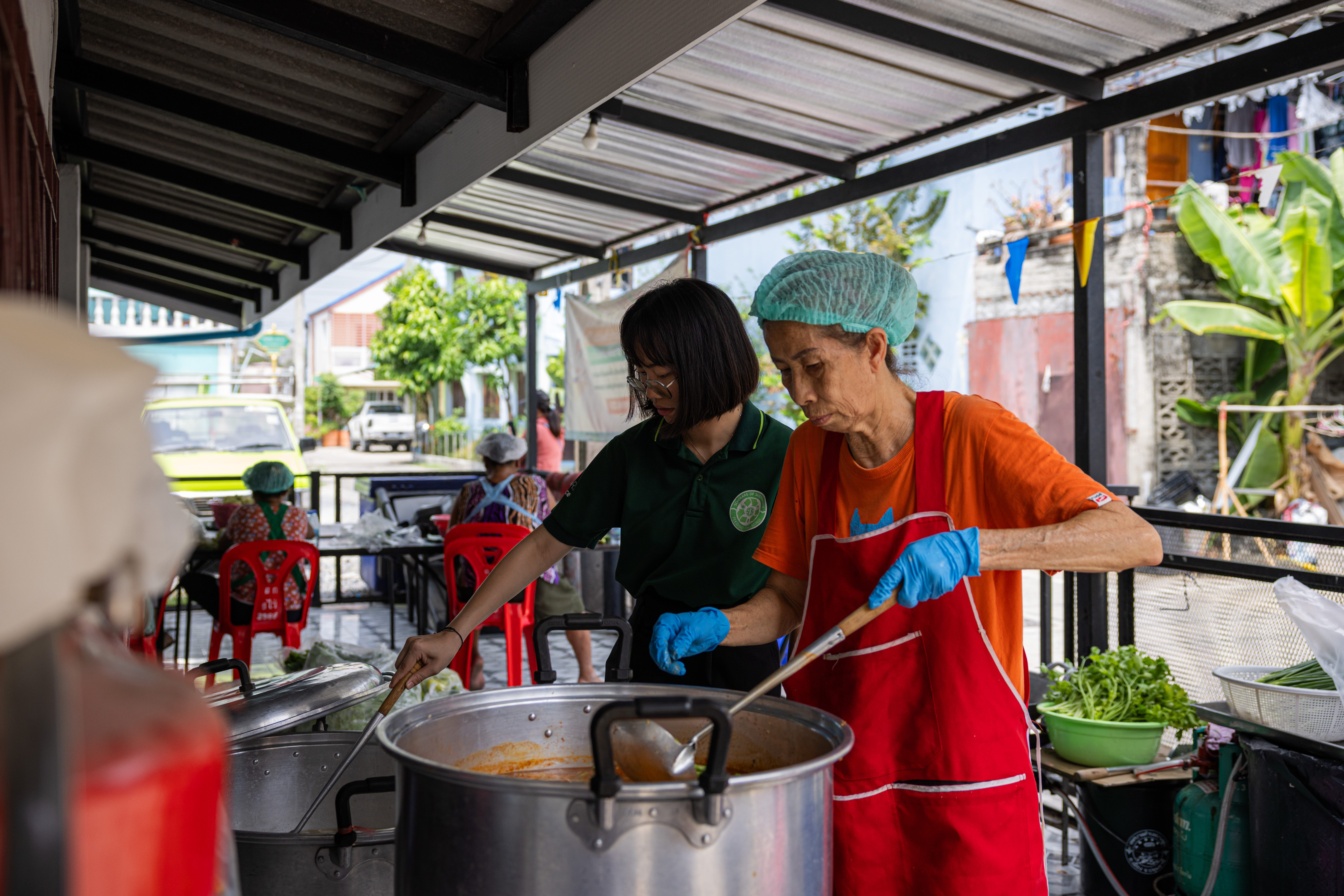
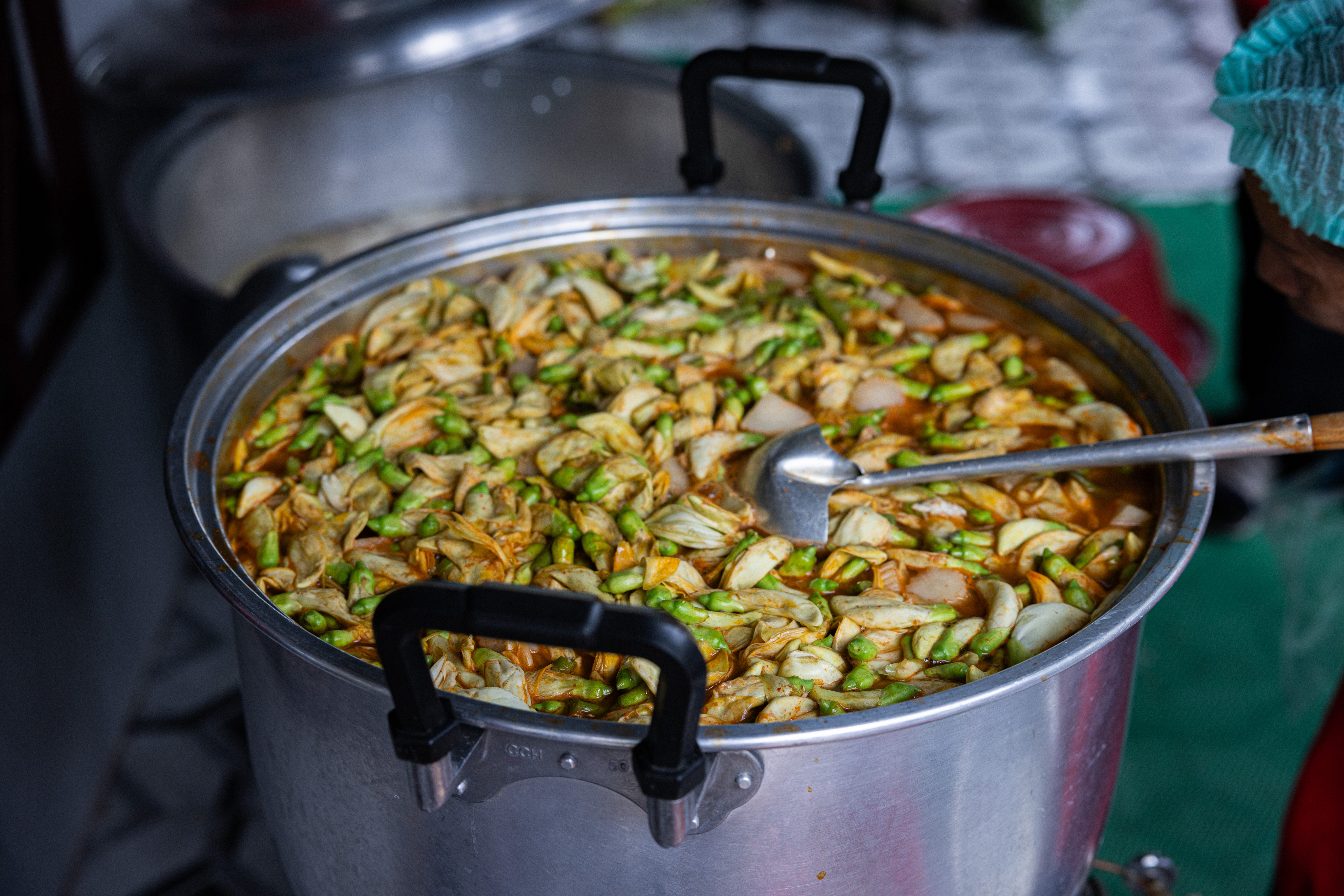
SOS food recovery operations by staff and volunteers run seven days a week, but that’s not stopping the team from thinking about what else they can do to get more food to more people.
At the SOS Bangkok office, a building shared by nine nonprofits, Tanaporn shares proudly that “we are really hands on, and people see that we are real doers.”
Even though the Local Volunteer Network program only started last year, the SOS team is already thinking about ways to expand and improve its operations. Over the next few years, they plan to replace volunteers’ paper tracking system with the Food Warrior App. The app is currently used by Food Rescue Ambassadors (FRAs) like Kristrin to track donation and logistics data in real time. FRAs input everything from food category, weight and temperature to parking challenges at a pick-up location — critical information for ensuring food safety, improving operations and building donor relationships.
In between picking up food donations, managing hot meals at the community kitchen and her many other volunteer roles, Kamonlak is thinking about what’s next, too.
“If you ask me what I’d like to see in the future,” said Kamonlak. “We’ll have more partners who donate food to the community, to the people here. We’ll have good housing, good health and good food.”
